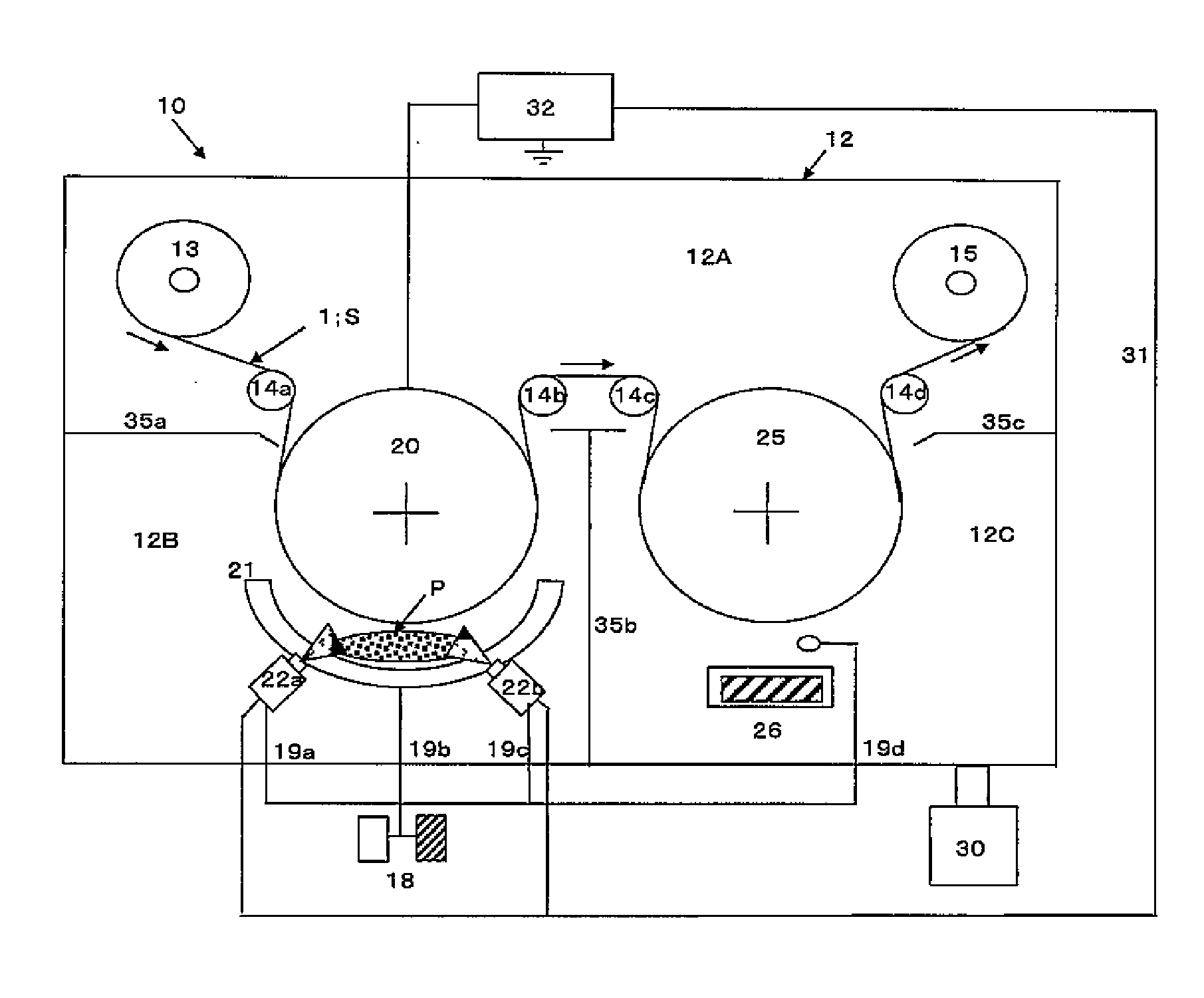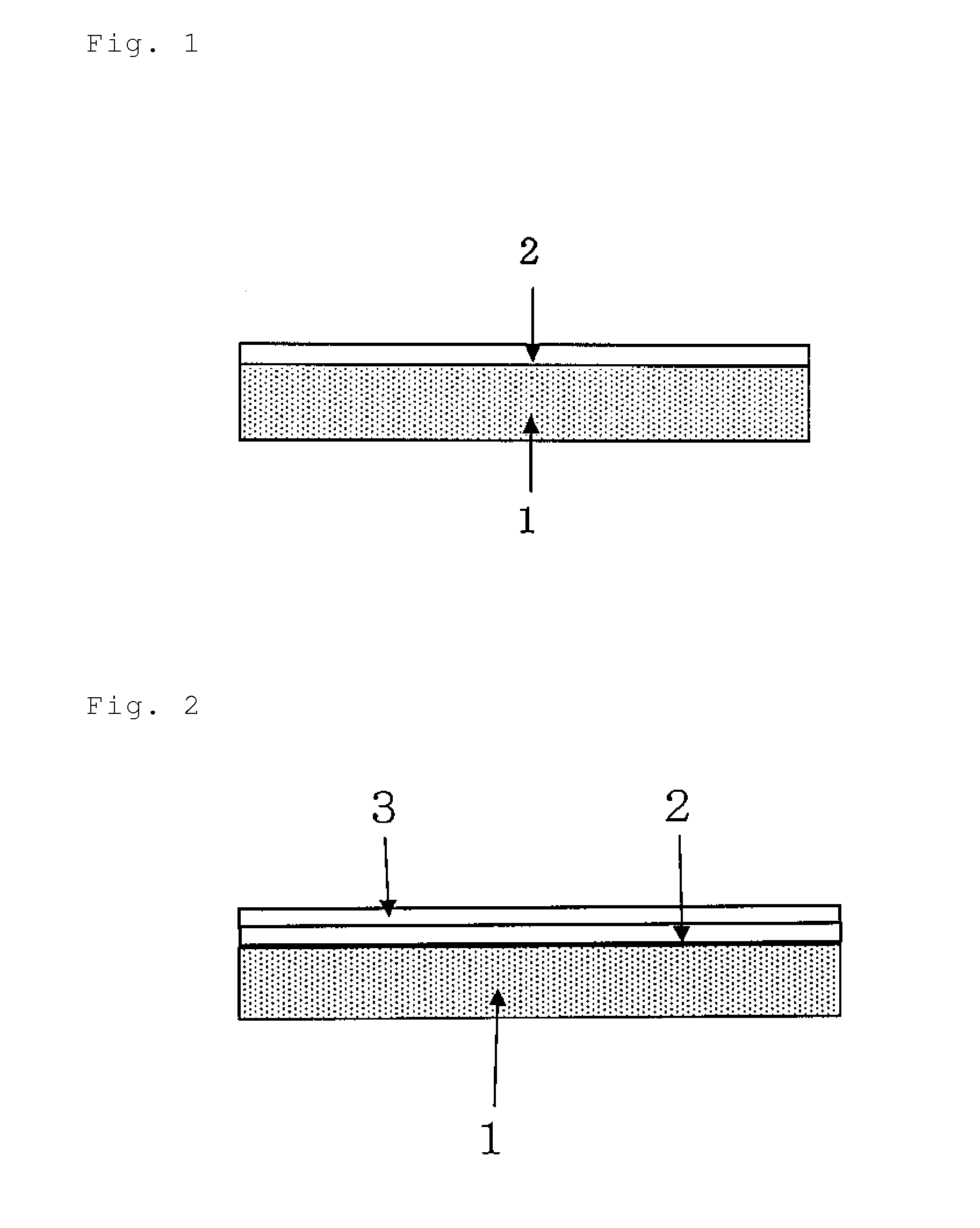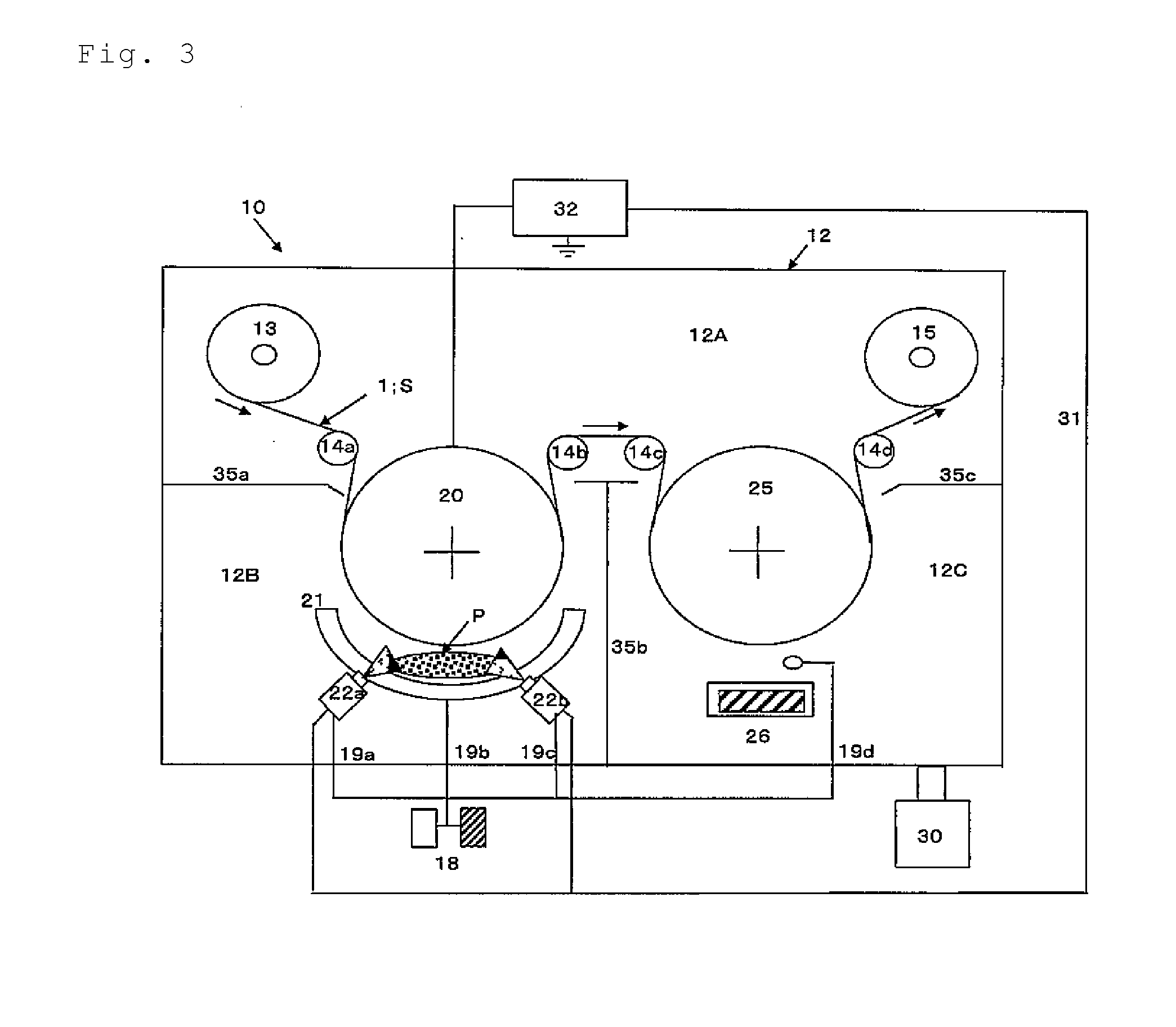Transparent vapor-deposited film
- Summary
- Abstract
- Description
- Claims
- Application Information
AI Technical Summary
Benefits of technology
Problems solved by technology
Method used
Image
Examples
example 1
[0225]On the side of a 12 μm-thick PET (PET-F, product of Unitika, Ltd.) substrate to be provided with a vapor deposition layer, plasma was introduced using a continuous vapor-deposited film forming device having a separated preprocessing chamber provided with a plasma preprocessing device of the invention, and a film-forming chamber, from a plasma supply nozzle in the preprocessing chamber under the following plasma conditions, and after conducting plasma preprocessing at a transport speed of 480 m / min, an aluminum oxide vapor deposition layer was formed to a thickness of 8 nm on the plasma-treated surface under the following conditions being continuously transported in the film-forming chamber, using a reactive resistance heating system as the heating means of the vacuum vapor deposition method.
(Plasma Preprocessing Conditions)
[0226]High-frequency power source output: 4 kW
Plasma strength: 550 W·sec / m2
Plasma-forming gas: Oxygen 100 (sccm), argon 1000 (sccm)
magnetism forming means:...
example 2
[0228]On the side of a 12 μm-thick PET (PET-F, product of Unitika, Ltd.) substrate to be provided with a vapor deposition layer, plasma was introduced from a plasma supply nozzle under the same conditions an Example 1, except that the plasma strength was 12 kW in the preprocessing chamber of the continuous vapor-deposited film forming device having a separated preprocessing chamber provided with a plasma preprocessing device of the invention, and a film-forming chamber, and after conducting plasma preprocessing at a transport speed of 480 m / min, an aluminum oxide vapor deposition layer was formed to a thickness of 8 nm on the plasma-treated surface under the same conditions as Example 1, being continuously transported in the film-forming chamber, using a reactive resistance heating system.
example 3
[0229]On the side of a 12 μm-thick PET (PET-F, product of Unitika, Ltd.) substrate to be provided with a vapor deposition layer, plasma was introduced from a plasma supply nozzle under the same conditions an Example 1, except that the plasma strength was 12 kW in the preprocessing chamber of the continuous vapor-deposited film forming device having a separated preprocessing chamber, provided with a plasma preprocessing device of the invention, and a film-forming chamber, and the oxygen plasma-forming gas was changed to nitrogen, and after conducting plasma preprocessing at a transport speed of 480 m / min, an aluminum oxide vapor deposition layer was formed to a thickness of 8 nm on the plasma-treated surface under the same conditions as Example 1 while being continuously transported in the film-forming chamber, using a reactive resistance heating system.
PUM
| Property | Measurement | Unit |
|---|---|---|
| Temperature | aaaaa | aaaaa |
| Temperature | aaaaa | aaaaa |
| Fraction | aaaaa | aaaaa |
Abstract
Description
Claims
Application Information
 Login to View More
Login to View More - Generate Ideas
- Intellectual Property
- Life Sciences
- Materials
- Tech Scout
- Unparalleled Data Quality
- Higher Quality Content
- 60% Fewer Hallucinations
Browse by: Latest US Patents, China's latest patents, Technical Efficacy Thesaurus, Application Domain, Technology Topic, Popular Technical Reports.
© 2025 PatSnap. All rights reserved.Legal|Privacy policy|Modern Slavery Act Transparency Statement|Sitemap|About US| Contact US: help@patsnap.com



